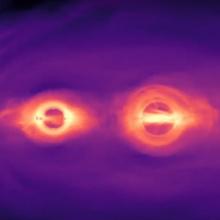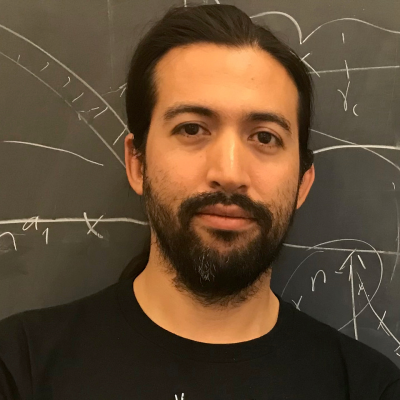
At the end of a star's lifetime, if it has sufficient mass, general relativity predicts that the star may undergo stellar collapse into a black hole, which is a region of space in which the gravitational pull is so strong that not even light can escape. In the Milky Way, there are roughly a hundred million stellar mass black holes formed from core collapse of stars. Black holes may be formed in isolated systems in which they are not accompanied by other astrophysical objects, but also in binary systems where they may be a compact object or star that accretes onto the central black hole. Gas that surrounds a black hole may lose angular momentum and fall into it. Very near the black hole, the gas is heated up from friction and the intense gravity of the black hole, where astronomers may observe strong X-ray sources in our galaxy.
CCRG scientists use numerical relativity to study strong-field gravitational dynamics and radiation phenomena of closely interacting binary black holes in astrophysics. These events are also a source of powerful gravitational waves and energetic gamma-ray bursts. To understand these phenomena, we need to solve the Einstein’s General Relativity field equations numerically, with or without matter and electromagnetic fields, with the aid of powerful supercomputers.
There are a host of research projects that are currently in place at the CCRG that center around black holes. Some of them are focused on numerical relativity simulations on supercomputers, some are involved in gravitational-wave data analysis in the LIGO Scientific Collaboration, and some are involved in studying implications of the supermassive black holes on their astrophysical environment in the centers of galaxies.
Past key developments include the discovery of the "moving punctures" modeling techniques, that permitted the first calculations of gravitational waves from binary black hole mergers, the discovery of large gravitational-radiation recoils (up to 5000 km/s) from merging spinning supermassive black-holes, the study of spin dynamics effects, such as spin-flips, precession and hang-up orbits and extreme mass-ratio binaries. You can read more about these seminal contributions in our Numerical Relativity section.




















